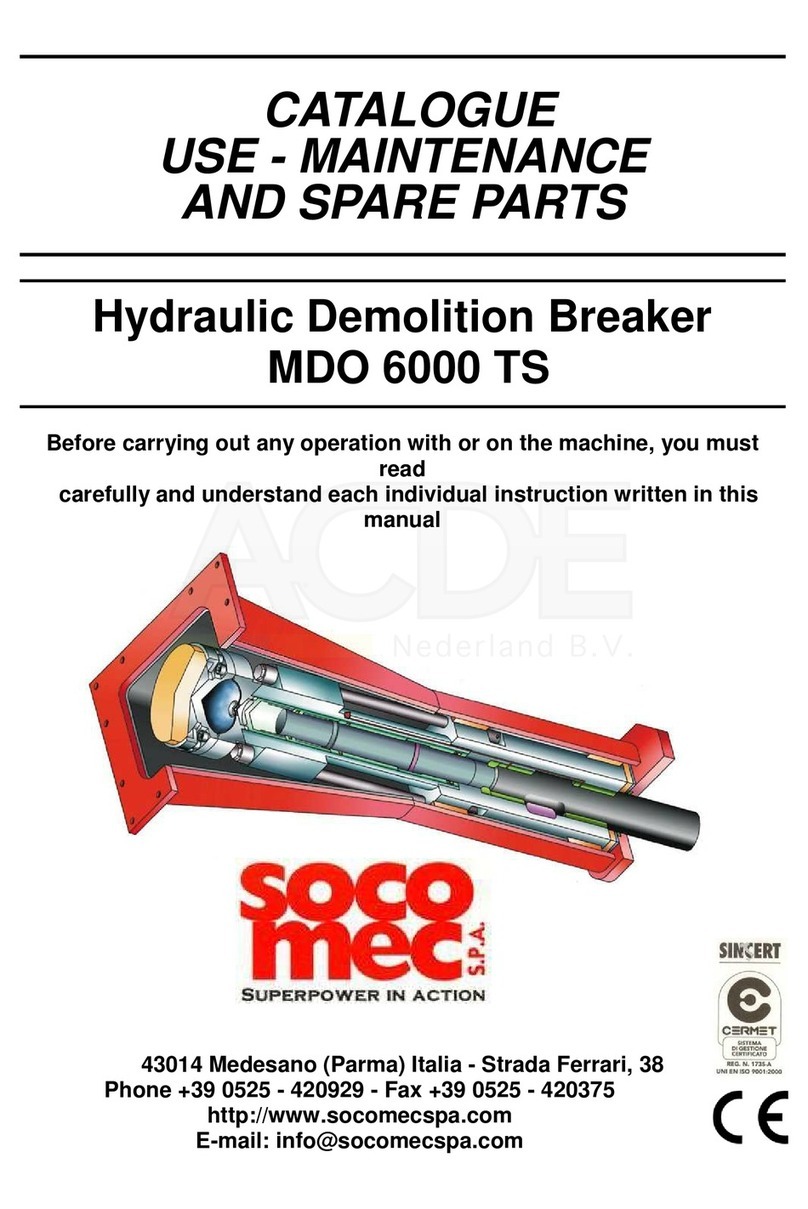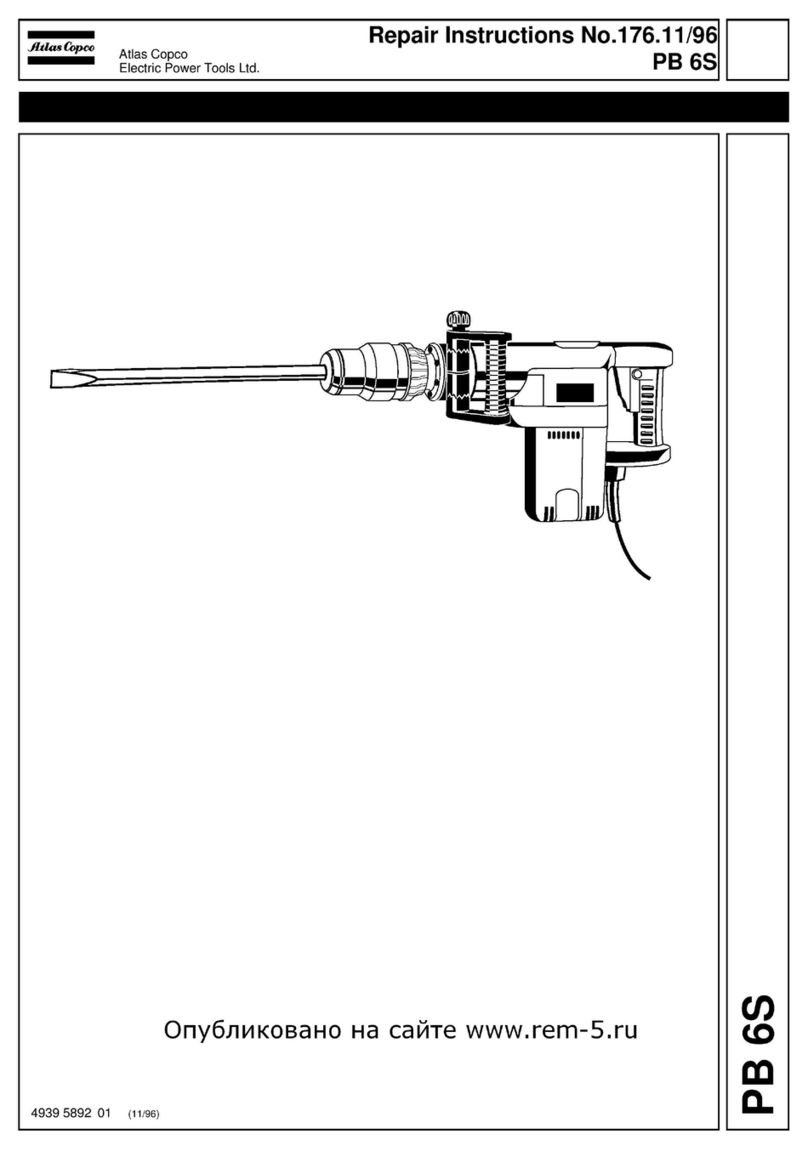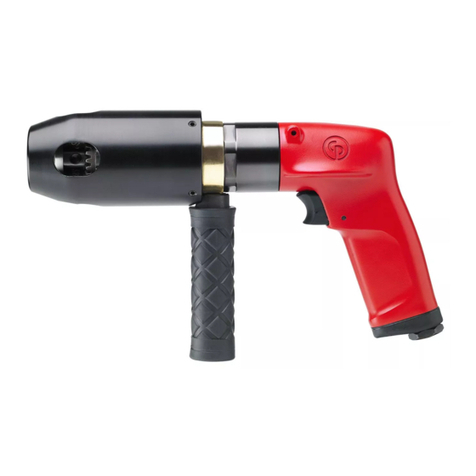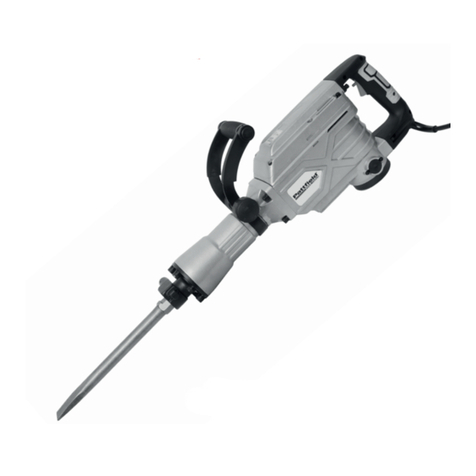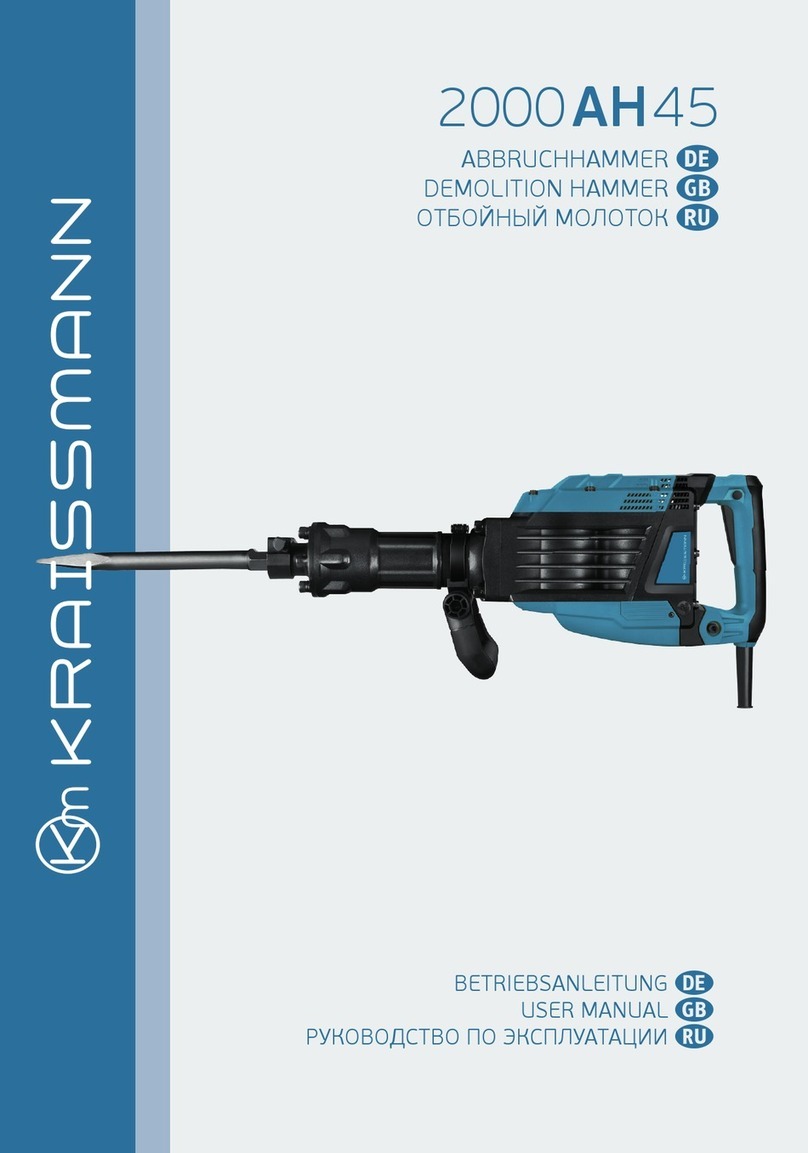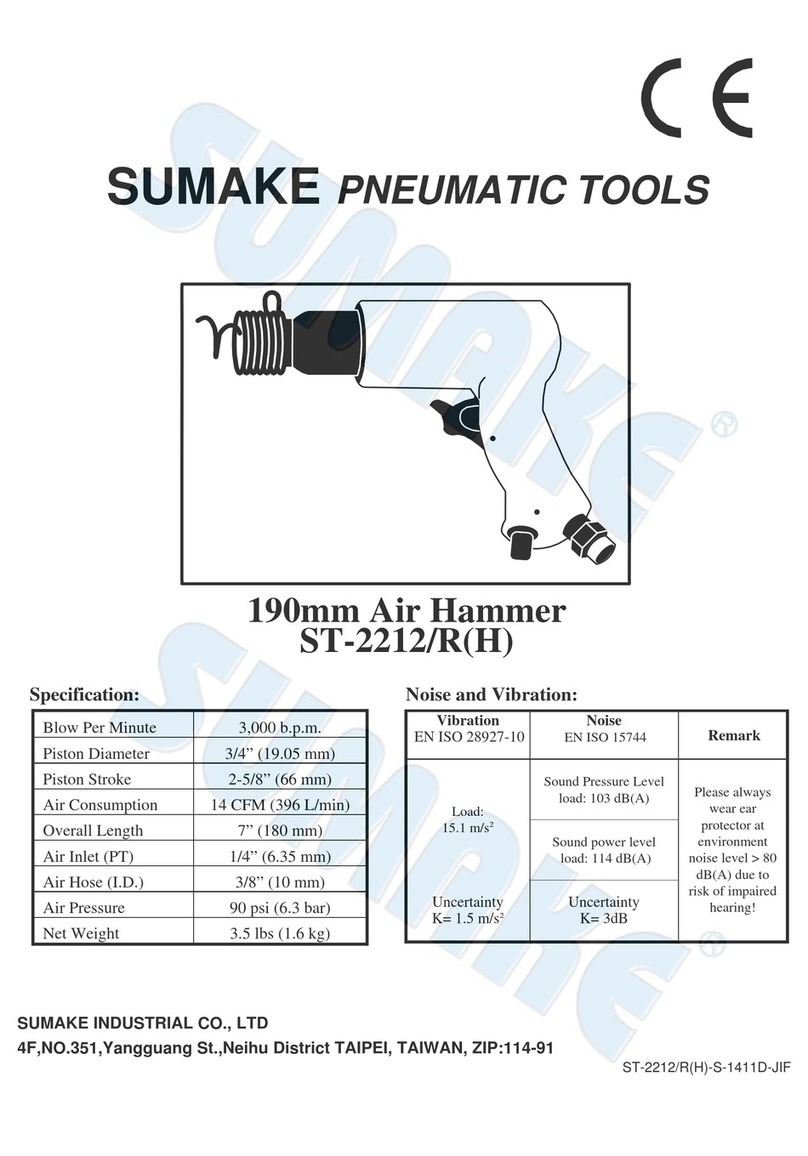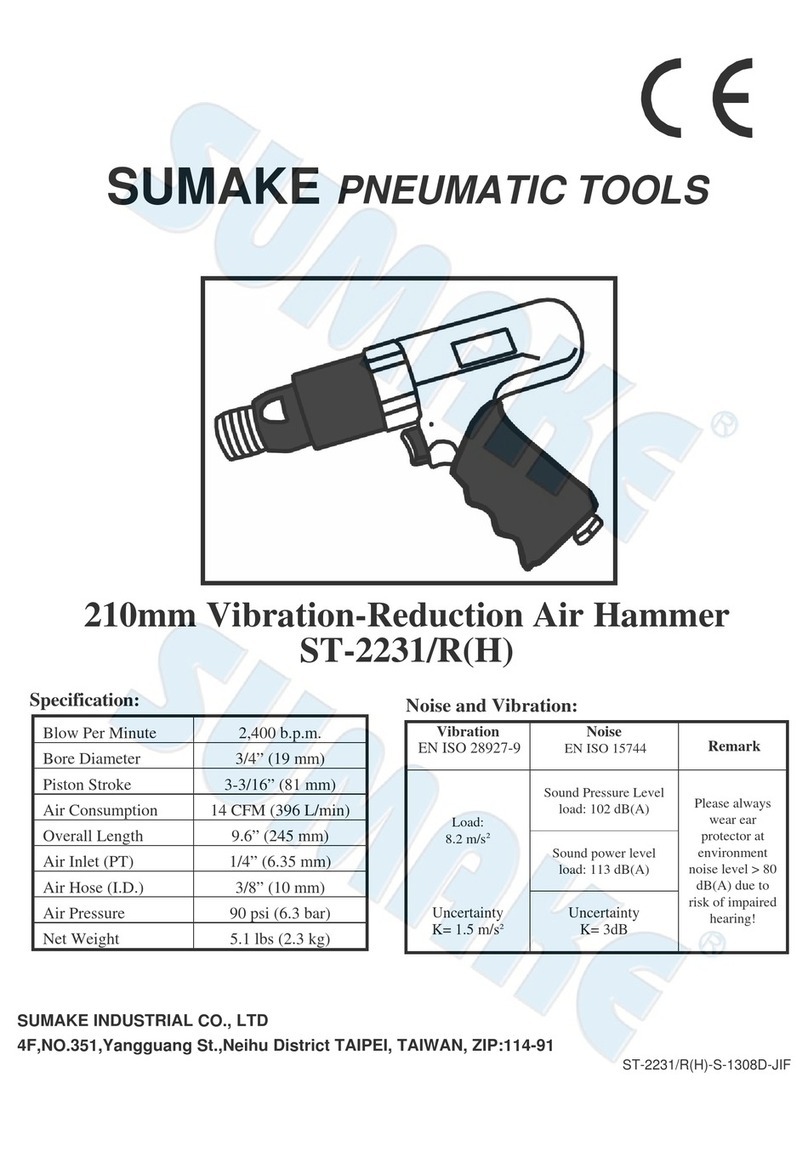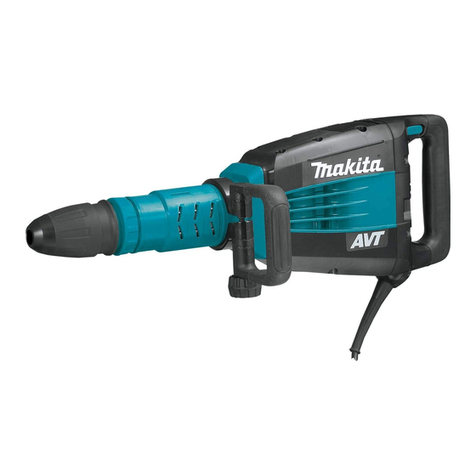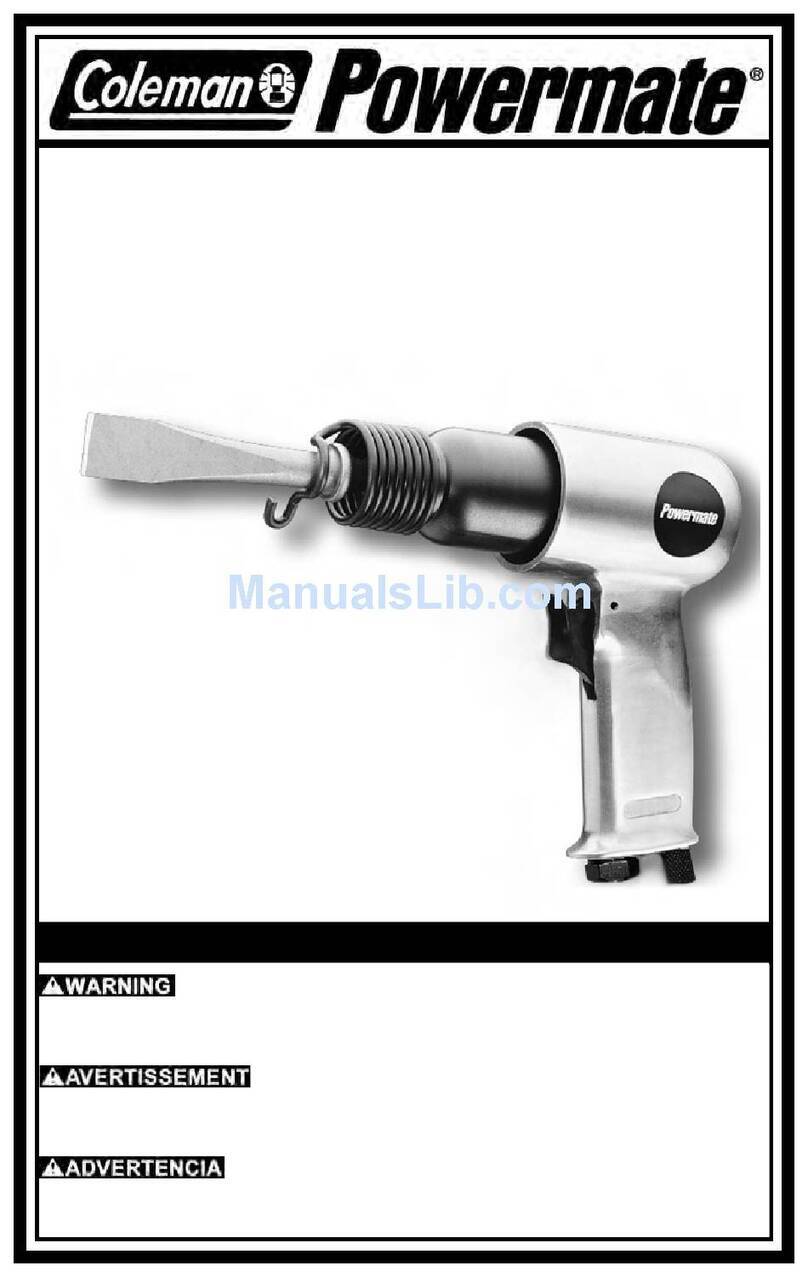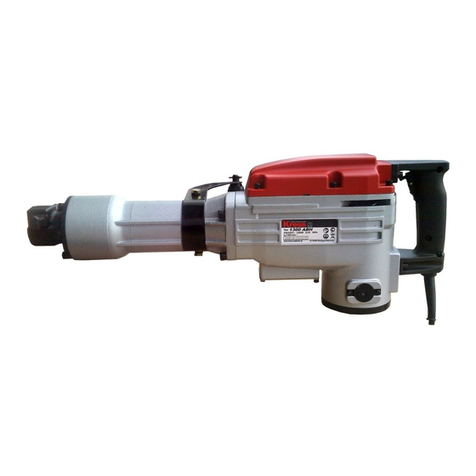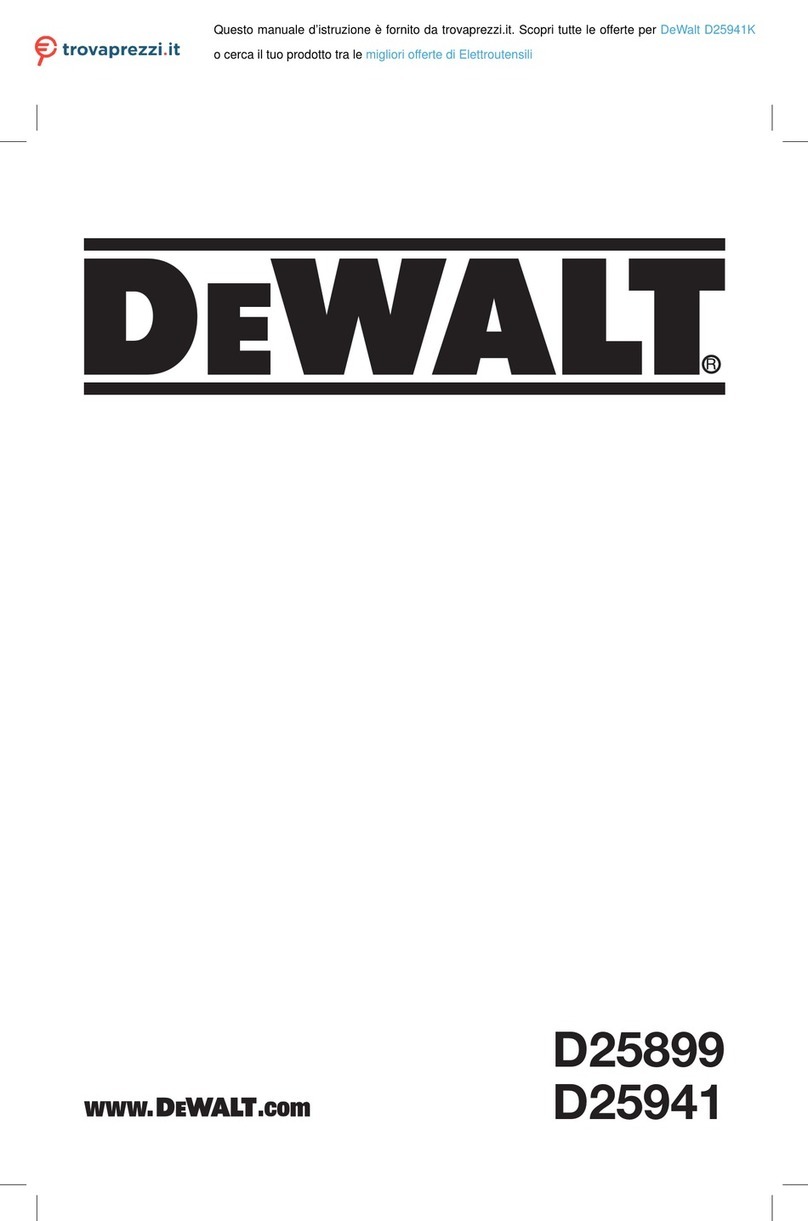
12 Rev. 23.05.2017 13
Rev. 23.05.2017
SAFETY INSTRUCTIONS
1. Keep work area clean. Cluttered areas can cause injuries.
2. Consider the work area environment before starting to work. Don’t expose power tools to rain or
wet soil. Don’t use power tools in damp or wet locations. The work area should be well secured. Don’t
use the tool in the presence of ammable liquids or gases. Power tools produce sparks during normal
operation or when switching ON/OFF. Never use power tools in dangerous sites containing lacquer,
paint, benzene, thinner, gasoline, gases, adhesive agents, and other materials which are combustible or
explosive.
3. Provide sufcient protection against electric shock. Prevent body contact with grounded surfaces. For
example: pipes, radiators, ranges, refrigerator enclosures.
4. Keep children and third parties away from work area.
5. Store unused tools. When not in use, tools should be stored in dry and high or locked-up place out of
reach of children.
6. Do not overload the machine! To ensure an optimum in the performance and safety of the machine,
only use it within the set parameters.
7. Use only suitable tools. Don’t use small tools or attachments. Don’t use tool for not intended purpo-
ses. For example: don’t use circular saw for cutting tree limbs or logs.
8. Dress properly. Do not wear loose clothing or jewellery. They can get caught in moving parts. Rubber
gloves and non-skid footwear are recommended when working outdoors. Wear protective hair co-
vering to contain long hair.
9. Use safety glasses. Also use face or dust mask if the cutting operation is dusty.
10. Do not damage the connection cable. Never carry the tool by the cord or yank the cord to discon-
nect it from the power source. Keep cord from heat and oil sources and sharp edges.
11. Secure work area. It is recommended to use clamps or a vice for xation. Please pay special attention
to your hands when operating the machine!
12. Do not overreach yourself. Keep proper footing and balance at all times.
13. Hold the machine rmly in both hands. When using the machine, hold it by the handles provided with
the machine.
Operation manual must be reviewed.
Never dispose of electrical equipment together with household waste.
This machine conforms to CE declarations.
Safety goggles must be used.
Ear protection must be used.
Safety mask must be used.
Protective footwear must be used.
II protection class machine with double insulation.
Attention! Wear protective gloves.
SYMBOLS
PLEASE NOTE! Drawings in this manual are for illustration purposes only and in some de-
tails may differ from the actual machine.
The original operation manual is in German. Other language versions are translations from German.
14. Maintain tools with care. Keep tools clean for better and safer performance. Follow instructions
for changing accessories. Inspect extension cords periodically and replace if damaged. Keep hand
les dry, clean, and free from oil and grease.
15. Switch off the machine and disconnect the cable before performing maintenance or changing
accessories.
16. Remove adjusting keys and wrenches. Always make sure that keys and adjusting wrenches are
removed from the tool before turning it on.
17. Avoid unintentional starting. Don’t carry plugged-in tool with nger on switch. Be sure the tool
is switched off when plugging it in.
18. During outdoor work use extension cords intended for outdoor use.
19. Stay alert when operating the machine. Do not operate tool when you are tired.
20. Check damaged parts. Before further use of the tool, any part of the casing or other parts that
are damaged should be carefully checked to determine that they will operate properly and per
form their intended function. Check for alignment of moving parts, mounting, and any other con
ditions that may affect its operation. A part that is damaged should be properly repaired or
replaced by an authorized service centre unless otherwise indicated elsewhere in this
instruction manual. Defective switches should be replaced by an authorized service centre. Do
not use the tool if the switch does not turn it on and off.
21. Do not use power tools for applications other than those specied in the instructions (other
than that for which it was designed).
22. To ensure the designed operational integrity of power tools, do not remove installed covers or
screws.
23. Do not touch movable parts or accessories unless the power source has been disconnected.
24. Use your tool at lower input load than specied on the nameplate to increase working
efciency and decrease wear out.
25. Do not wipe plastic parts with solvent. Solvents such as gasoline, thinner, benzene, alcohol,
ammonia and oil may damage and crack plastic parts. Do not wipe them with such solvents.
Wipe plastic parts with a soft cloth lightly dampened with soapy water.
26. Consult an authorized service agent in the event of power tool failure.
27. Use only original replacement parts.
28. This tool should only be disassembled for replacement of carbon brushes.
29. When transporting and moving demolition hammers from storage location to application location
make sure to follow the occupational health and safety rules applicable for manual transportation
work in the country in which the demolition hammers are operated.
30. Hold the demolition hammer by insulated surface of handles as it is possible that hidden electric
wires or the device’s own power cord may be struck during execution of demolition works. Contact
with an electric wire of a power network may cause electrocution.
PRECAUTIONS ON USING THE MACHINE
1. Wear protective glasses to protect your eyes.
2. Use dust masks.
3. Use earplugs to keep your ears noise-free while working.
4. Check for the proper adjustment of the handle.
5. The tool becomes very hot during operation.
6. Be sure to use the side handle.
7. Safe operation depends on one’s work posture.
8. Before commencing work, the oil level and tightness of screws is to be checked.
9. When working in an elevated location, pay attention to objects and persons below.
10. Before you start breaking or chipping a wall, oor or ceiling, thoroughly conrm that no items such as
an electric cable conduit or pipes are cached inside.
11. Wear protective shoes to protect your feet.
Failure to follow safety recommendations and instructions may result in serious


